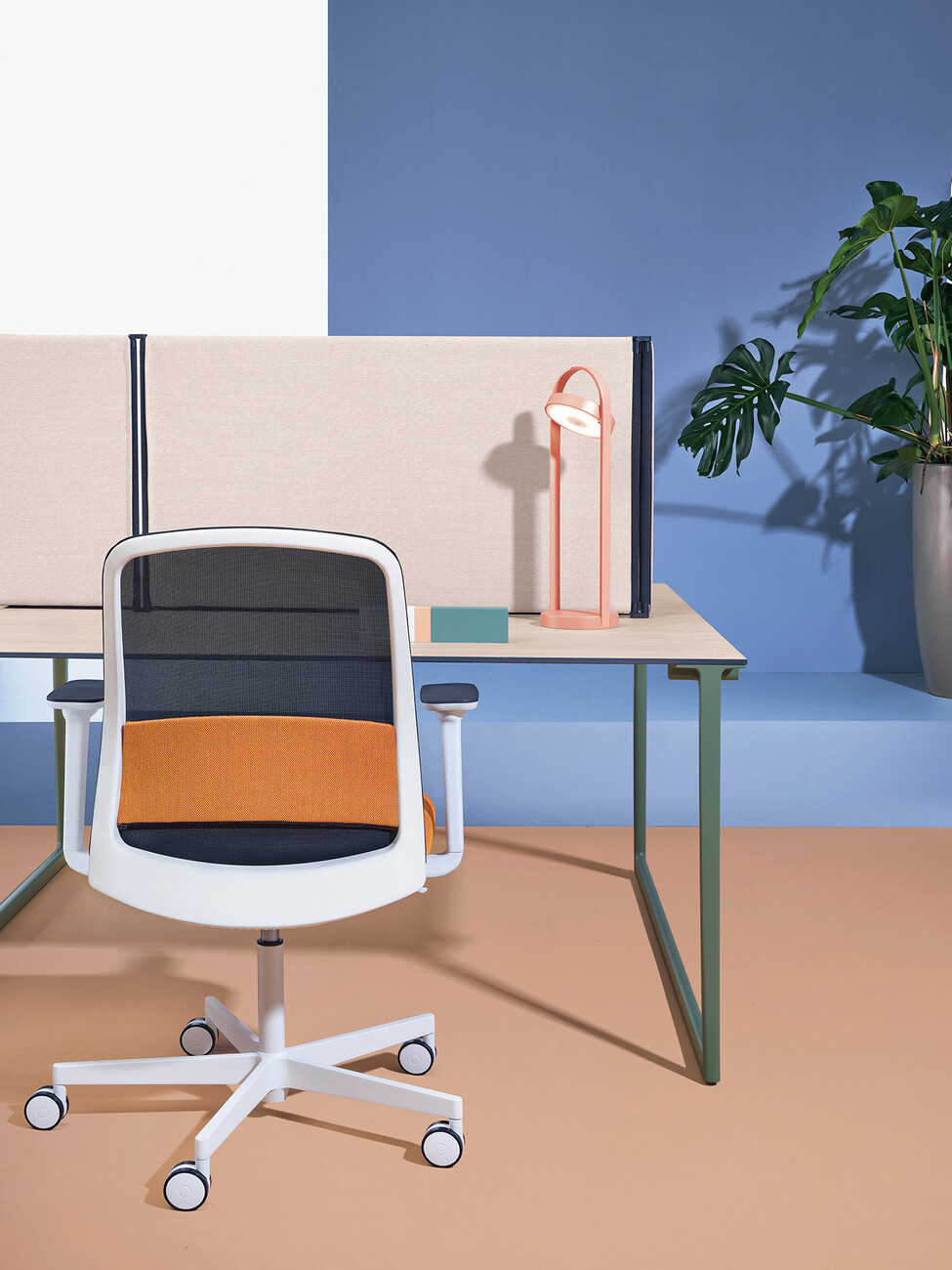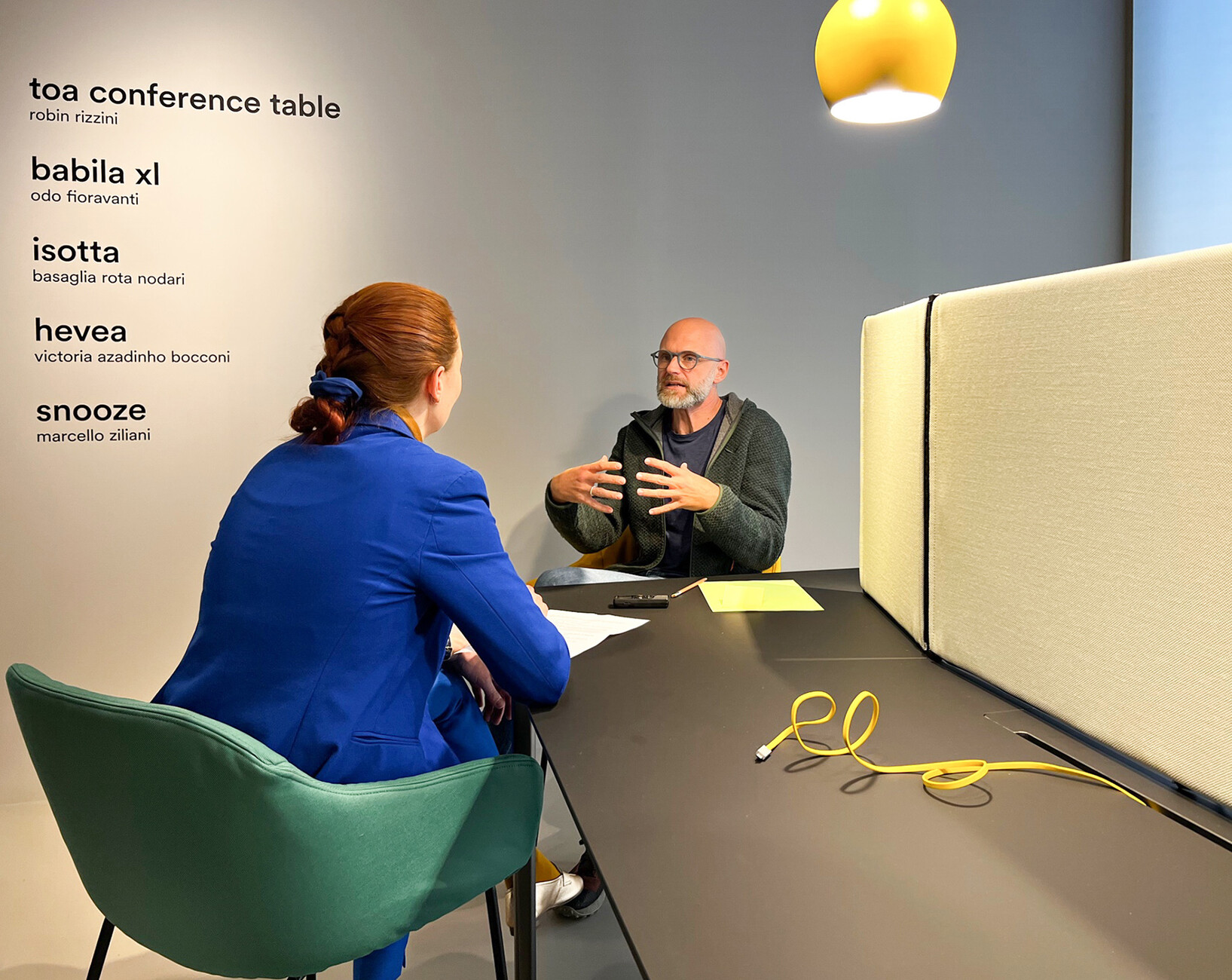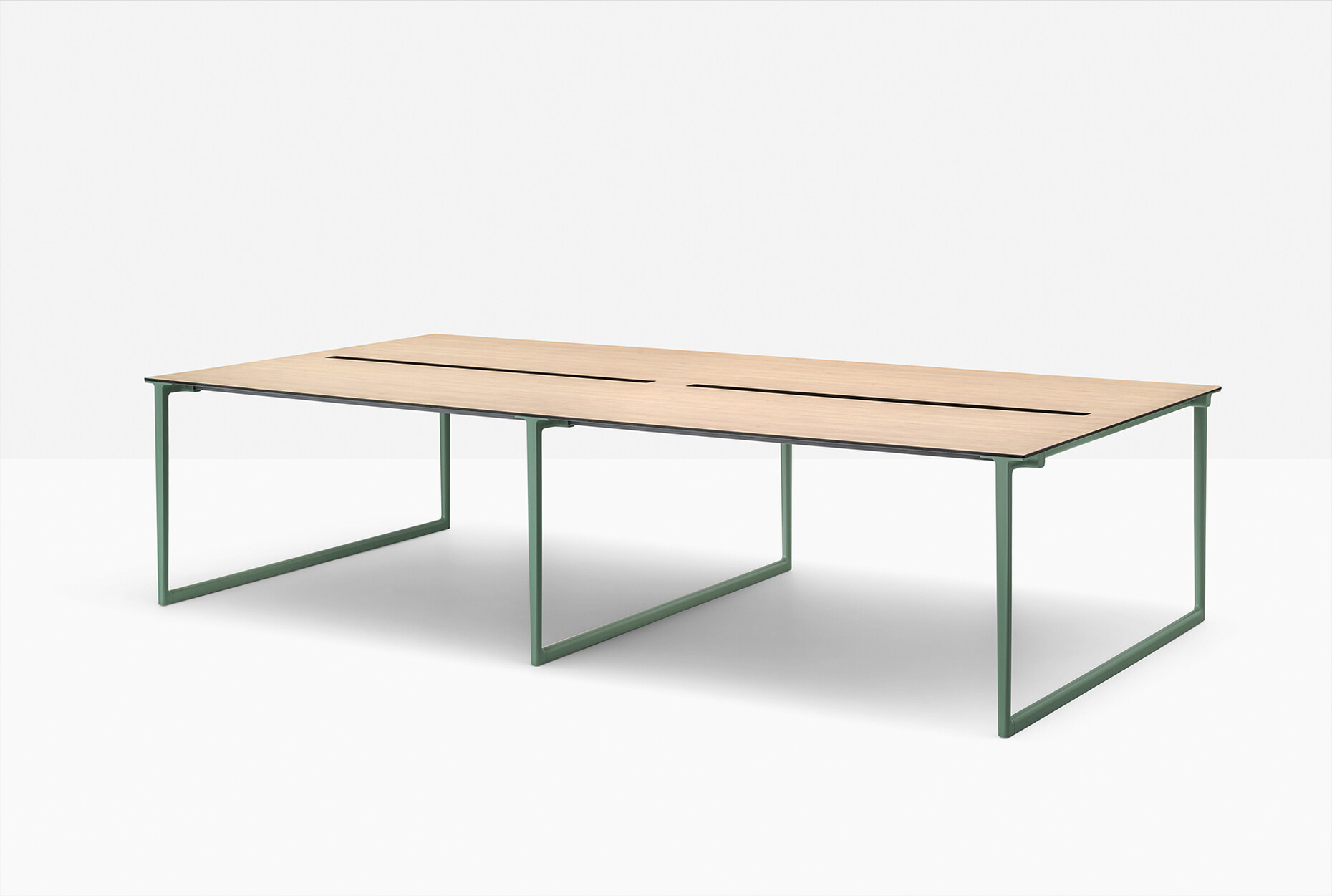STYLEPARK PEDRALI
Closest to architecture
Anna Moldenhauer: New Work has been a topic for some years now and the discussion has gained momentum in the pandemic. In your opinion, what form of furnishing is essential for today's working world?
Robin Rizzini: It probably started with the reflection of the office in general, which will continue to change in a big way. I think that in the future we will no longer spend all our working time in an office. The office will primarily be a place to meet, to exchange visuals and to work together when necessary. So you work independently and have more time to concentrate on yourself. This is also why there is a lot of consideration of soft seating like lounge furniture so that people can meet and work on a laptop. It affects the way businesses are managed too, there is no need for people to be there all the time. The focus is on results, the way to get there has become much more open and free. I think there is really something to do with the way we live today. We download an app, spontaneously rent a scooter, we use things temporarily for the time we need them. A desk is no exception, you can book a place in the office for a few hours and work somewhere else the rest of the time or move on to other issues. That's what we're seeing at the moment, people quitting their jobs to have more time. Covid has started a process, and we are currently only seeing a small part of it. Increasingly, that is going to change. For a better balance between life and work, spaces need to be flexible. You have to give people space that can change during the day according to their needs.
How did the collaboration with Pedrali come about?
Robin Rizzini: I have known Giuseppe Pedrali for more than 12 years. The Toa table presented in 2020 was a new project I had designed for myself, and the first instinct was to show it to Giuseppe. He liked it from the start, and if you look at the sketches of the project, it was essentially the same as now. We just made the top thinner and hid the connector inside. It's simpler and has more to do with sustainability, with disposable materials, in a more logical and sustainable way. Toa is a little different from the tables I used to create. These were composed of different materials and glued together. Even though some of these technologies were very forward-looking, for example we used glue that is also a material for helicopter rotor blades, I wouldn't want to offer that today.
The Toa Workstation should therefore be clear on all levels – formally as well as in terms of sustainability.
Robin Rizzini: Exactly, I also wanted to create a platform – for myself but also for others. A table made of a beautiful material that is flexible and can be chosen in different versions. At which people can both work and eat. That's why there are also three different cabling solutions for the Toa Workstation. Formally, the table is very clear, as visual noise can also distract people.
Sketches have a special meaning for your work. How can I imagine the creative process for the Toa collection?
Robin Rizzini: Sketching is the most important phase for me. It can be done in different ways, with a sketchbook or with an iPad, which is easier. It's not so "romantic" to work with an iPad, but you can change, save and send sketches faster. Through the sketch I can see the proportions of the object, the technical solution. I need more than the essentials; I want to emphasize the details. And the rest is made up of people who help me work under pressure, because basically I'm too old to work with 3D. (laughs)
I like this phase, it's part of the process. Even if it feels like it's very useless work, but in the end it's not. Because through 3D technology you transfer the feeling for proportions and the technical solution.
What was the next step?
Robin Rizzini: I started with the sketch, then we created 3D models – and then came the pandemic. During this time, we sent lots of files back and forth to find the final version. The interaction with Pedrali felt a bit like music, it was like many musicians of an orchestra working separately on a common melody. It worked well and we came to a result faster than expected. However, due to the restrictions during the pandemic, it took a while until the prototypes and final results were ready.
The shape of the Toa Workstation is very straightforward, but still an eye-catcher. The edge of the top becomes narrower towards the centre of the table, and the skid-shaped table legs end in a T-shape. You give the technical function a new aesthetic. Did you have this claim in mind at the beginning or did it emerge in the process?
Robin Rizzini: Tables are the closest furniture to architecture, I enjoy that because I'm a big fan of architecture. I'm not an architect myself, and that gives me enormous freedom because I don't experience the frustration of not being a great architect. Instead, I can enjoy architecture from a design perspective. The idea for this table was already at the beginning to find something that has a reference to ancient architecture. The table slims down like a roof from the top to the legs, it's a great symbol.
The edge runs along the underside of the table towards the centre with a gentle curve. What was your idea here?
Robin Rizzini: The radius is also repeated on the inside of the profiles. It is pleasant to the touch. I think it's very important that you feel comfortable when you touch design.
The Toa Workstation is available in different versions – the aluminum frame is thus available in different lacquer finishes, the tabletop can be made of solid laminate, Fenix board or oak veneer board, and with regard to cable routing, many individual wishes can be fulfilled. What criteria did you use to select the options?
Robin Rizzini: The material of the structure, the aluminum, was relatively clear from the beginning, because it is the only one that can form this kind of design. We form with this material the elements that make up the bridge, the legs and the connecting profiles. The cross beams, made of steel, also support the top. In contrast, I wanted to use a thin material like HPL (high pressure laminate). It is a very thinly material, but also very durable. I think it brings out the reduced, industrial look better.
Pedrali is a very sustainable company. Did you plan the process, from the material to the logistics, together with Pedrali to make it as holistically sustainable as possible?
Robin Rizzini: It wasn't necessary, because we have the same approach. The industrial process should be as sustainable as possible. That was an important aspect in the process. The Toa Workstation is therefore very easy to assemble and disassemble and can be shipped flat packed. As a designer, I follow the spirit of the times. I would not feel comfortable if what I design would be a problem at the end of its life cycle.
Besides the Toa Workstation, Toa is also a collection. Did you plan from the beginning what elements it should consist of?
Robin Rizzini: The idea was to develop a complete language with Toa. That's why we are constantly developing the structure, from the Toa Table to the Toa Folding Screen to the current Toa Workstation. Which part of the vision we finally develop further will become apparent in the process.
You combine different cultures in your identity, you were born in Genoa but also have roots in the UK. To what extent do these influence your design?
Robin Rizzini: In many ways. I think the influences on my design come from very different regions, it's a bit Italian, a bit British – plus I was certainly influenced by not being born in Milan but growing up by the sea. Then there is the music, the architecture, the design itself. It's hard to say which aspect is decisive for a project. Most of it happens instinctively. I try not to focus too much on what has been, whether in my own work or looking at the work of others. I don't try to reinterpret the great masters. I generally don't think it makes sense to revise philosophies that are already several decades old. If these designers were alive today, their interest and work would be shaped by today's progress. It is good to know where one's roots lie, but one should not lose sight of one's own present. Even if it is certainly easier to rethink something existing and translate it into a new version than to develop a completely new design.
You teach at the Scuola Politecnica di Design in Milan. What is important to you to pass on to the younger generation of designers?
Robin Rizzini: First of all, I think teaching is a social responsibility if you can pass on knowledge. I am not an academic, but I can teach how to do this job. I work with the students on projects. I try to give them an insight into this profession. It's not possible to teach all the details that lead to great design, but you can give a context, a way of thinking and a workflow. So to speak, open a window into what this profession is all about. It doesn't just involve designing objects and processes but also dealing with professionals, with companies based on economics and money, and bringing their opinions to the work. Being able to deal with that as a designer is just as important as actually designing things.























